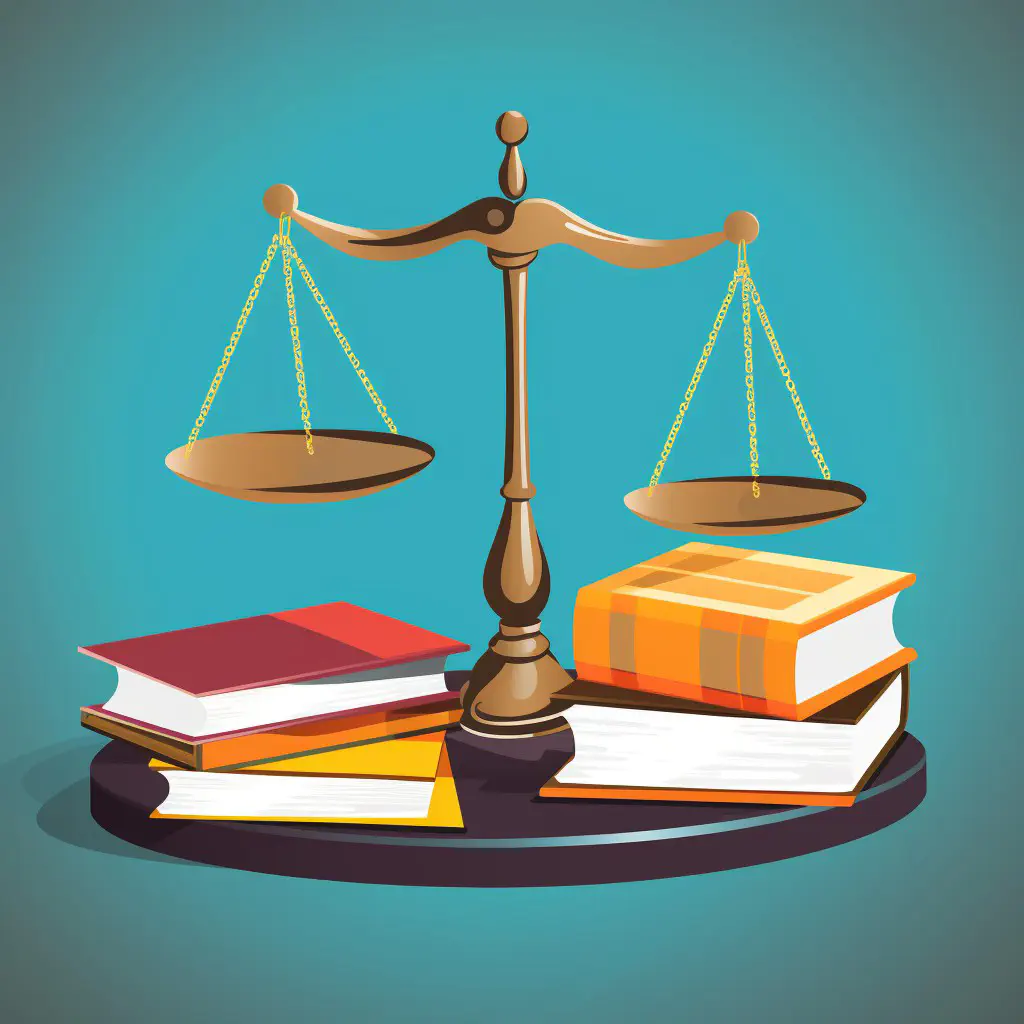
Introduction
In today’s digital world, we are constantly bombarded with information from various sources, including social media, news outlets, and online blogs. With so much information at our fingertips, it’s essential to be able to evaluate the credibility and reliability of the information we come across. This article aims to compare and analyze four popular methods for evaluating information: the CRAAP test, the Three C’s, the SIFT method, and the TRAAP test.
Each of these methods provides a framework for evaluating information based on different criteria, such as accuracy, authority, and bias. By using these methods, we can ensure that we are making informed decisions based on reliable information. In this article, we will explore the strengths and weaknesses of each method and determine which one is the most reliable and effective.
In the following sections, we will define each method, explain how to use it, and analyze its strengths and weaknesses. We will then compare and contrast the methods and determine which one is best suited for evaluating information in different contexts. Ultimately, the aim of this article is to provide readers with a better understanding of how to evaluate information critically and effectively, thereby helping them make more informed decisions in their personal and professional lives.
Method 1: CRAAP Test
The CRAAP test is a popular method among educators and students for evaluating information. It was created by librarian Meriam Library at California State University, Chico, and it stands for Currency, Relevance, Authority, Accuracy, and Purpose. The CRAAP test is designed to help users determine the credibility and quality of sources they discover by examining each of these criteria in detail.
How to use the CRAAP test
Currency
This criterion refers to the timeliness of the information you’re evaluating. It involves asking questions such as:
- When was the information created?
- Has it been updated or revised recently?
- Does it contain outdated information?
Documents that are the most current and up-to-date provide the most accurate and relevant information, so it is essential to consider when it was last updated.
Relevance
This criterion refers to the importance of the information to your research. It involves asking questions such as:
- Does it relate to your research topic?
- Is it in a format that will work for your assignment (i.e., book, article, website)?
- Who is the intended audience?
Sources that are directly related to your research and intended for your intended audience provide the most relevant information.
Authority
This criterion refers to the credentials of the creator of the information. It involves asking questions such as:
- Who created the information?
- What are their credentials/expertise?
- Is the information sponsored by corporations or organizations?
Sources that come from expert authors, reputable publishers, and organizations with authority help ensure the credibility of the information they present.
Accuracy
Accuracy refers to the truthfulness of the information. It involves asking questions such as:
- Is the information factually accurate?
- Does it contain any bias or errors?
- Does the author provide supporting evidence for their claims?
Documents that provide accurate and supported information help increase the value of the information being presented.
Purpose
This criterion refers to the intention of the creator of the information. It involves asking questions such as:
- Is the information objective, or does it have a particular bias?
- Is it promoting a particular agenda/idea?
- What is the purpose of the website/publication?
Sources that have clear intentions, objectives, and purposes provide more valuable information, unlike those that promote specific positions or agendas.
Strengths and weaknesses
The strength of the CRAAP test is that it is easy to remember and apply, and it can be self-administered. It gives the user a clear set of criteria that they can use to evaluate the sources they come across. However, some shortcomings are that each criterion is subjective, and people might use different standards while evaluating sources. Additionally, the method does not apply uniformly to every subject area.
Conclusion
The CRAAP test is a useful method for evaluating information as it provides a comprehensive, easy-to-follow set of criteria. However, its subjective application and lack of universality need to be considered while utilizing it for information evaluation.
Method 2: The Three C’s
The Three C’s is a method for evaluating information that has been popularized by the Foundation for Critical Thinking. According to this method, information should be evaluated based on its clarity, credibility, and consistency.
Clarity
The clarity criterion of information evaluation refers to how clear and understandable the information is. Clear information should be easy to understand, free from jargon, and presented in a coherent and logical manner. When evaluating information for clarity, it is important to consider the intended audience and the purpose of the information. Information that is unclear or difficult to understand can lead to misunderstandings and mistakes.
Credibility
The credibility criterion of information evaluation refers to the reliability and trustworthiness of the information. Credible information should be backed up by evidence and reputable sources. When evaluating information for credibility, it is important to consider the author or organization responsible for the information, the date of publication, and whether the information is supported by other sources.
Consistency
The consistency criterion of information evaluation refers to the coherence and internal consistency of the information. Consistent information should be free from contradictions and inconsistencies. When evaluating information for consistency, it is important to consider how well the information fits with other information you have found on the same topic.
Strengths and Weaknesses of The Three C’s Method
The Three C’s method is effective in helping us to evaluate information in a holistic manner by considering multiple criteria. This approach ensures that we assess information from different angles, taking into account the clarity, credibility, and consistency of the information. By doing so, we are more likely to identify any weaknesses or problems with the information.
One of the weaknesses of The Three C’s method is that it may be too simplistic for complex information or topics. The criteria of clarity, credibility, and consistency may be too broad and general for certain types of information. For example, evaluating scientific information may require more specialized criteria such as the validity of the methodology or the statistical significance of the results.
Overall, The Three C’s method is a useful tool for evaluating information, but it should be used in conjunction with other methods to ensure a more comprehensive evaluation.
Method 3: SIFT Method
The SIFT method is another popular method used for evaluating information. The acronym SIFT stands for Stop, Investigate the source, Find better coverage, and Trace claims, quotes, and media to the original context. This method is designed to help individuals sift through different types of information to find the most relevant and accurate data.
How to Use the SIFT Method
Step 1: Stop
The first step in using the SIFT method is to stop and consider the information you’re reading. Take a moment to think about the purpose of the information and your own biases or preconceptions that might affect how you interpret it.
Step 2: Investigate the Source
The next step is to investigate the source of the information. Consider the author, publisher, and the publication date. Check for the author’s credentials and any potential conflicts of interest that might exist.
Step 3: Find Better Coverage
The third step is to find better coverage of the topic. Consider other sources of information on the subject and compare the perspectives of different authors.
Step 4: Trace Claims, Quotes, and Media to the Original Context
The final step is to trace the claims, quotes, and media to the original context. Make sure that the information is being presented accurately and in the proper context.
Strengths and Weaknesses of the SIFT Method
One of the strengths of the SIFT method is that it encourages readers to think critically about the information they come across. It helps people to evaluate sources and information thoroughly to determine their accuracy and relevance.
One of the weaknesses of the SIFT method is that it can be time-consuming. Going through these four steps for multiple sources can take a lot of time, which might not be practical for those who need to make quick decisions.
Overall, the SIFT method is a reliable way of evaluating information. It encourages readers to take a deeper look at the sources and find the most accurate and reliable data. By following these steps, readers can determine the credibility of a source and make informed decisions based on the information they receive.
Method 4: TRAAP Test
The TRAAP test is another popular method for evaluating sources and determining their credibility. TRAAP is an acronym that stands for Timeliness, Relevance, Authority, Accuracy, and Purpose.
Timeliness
One of the first aspects to consider when evaluating a source is its timeliness. Does the information provided still hold true today? Is the information up to date or has it been overtaken by more recent developments?
Relevance
Assessing the relevance of a source is also crucial. Does the information presented in the source correspond to the topic that you are researching or the issue that you are trying to address? If a source isn’t relevant, then there is no point in using it.
Authority
Establishing the authority of a source is also important. Who is the author or the publisher of the source? Is the author an expert in the field or someone with a particular bias or agenda? Is the publisher reputable? These questions can help you determine whether or not you can trust the source.
Accuracy
Furthermore, checking the accuracy of the source is paramount. Are the facts presented true and verifiable? Are the sources cited reliable? The accuracy of a source is of great importance to the credibility of the information presented.
Purpose
Lastly, evaluating the purpose of the source can provide insight into any underlying bias or intention. Why was the information presented in the source? What is the intended audience? Was the information intended to persuade, inform, or entertain? Recognizing the source’s purpose can help readers decide whether or not to trust the information presented.
Strengths and Weaknesses
Like the other methods, the TRAAP test offers several strengths and weaknesses. One of its key strengths is that it is incredibly straightforward, making it easy to use for those just starting with information evaluation. Additionally, the acronym format makes it easy to remember the five aspects to consider.
However, the TRAAP test may not be as comprehensive as some of the other methods, and could potentially overlook crucial factors. Additionally, the straightforward approach may oversimplify complex issues, which could ultimately lead to inaccurate evaluations.
In conclusion, the TRAAP test provides a framework for evaluating sources that is easy to remember and relatively effective. However, like the other methods discussed, it should only be used as part of a broader approach to information evaluation.
Comparison of Methods
All four methods, CRAAP, Three C’s, SIFT, and TRAAP, are useful in evaluating the credibility and reliability of information. However, each method has its own strengths and weaknesses.
The CRAAP test is popular and widely used due to its simplicity and ease of application. It has five criteria that can be easily applied to any information source. However, this simplicity can also be a weakness, as it may not capture all aspects of the credibility of an information source. For instance, it does not consider the author’s motives or agenda.
The Three C’s method is also simple and easy to apply. It considers three key aspects, which are the creator of the information, their credentials, and the context in which the information was created. However, like the CRAAP test, it is limited in its scope and may not fully evaluate the credibility of an information source.
The SIFT method is a bit more complex, as it considers four aspects - Stop, Investigate the Source, Find Trusted Coverage, and Trace Claims, Quotes, and Media to the Original Context. It is comprehensive and takes into account factors like the credibility of the media outlet and the author’s reputation. However, as it involves more steps than the other methods, it may not be suitable for a quick evaluation.
The TRAAP test is similar to the CRAAP test, but it considers additional factors like the accuracy and relevance of the information to the research topic. This makes it more suitable for academic research or complex topics as it considers the purpose of the information source.
Overall, each method has its own strengths and weaknesses, and the selection of a particular method will depend on the purpose and complexity of the research. Combining the methods may also enhance the effectiveness of evaluating an information source.
Based on the analysis, the most reliable method for evaluating an information source is subjective. The TRAAP test and SIFT method may be more effective for academic research or complex topics, while the CRAAP test and Three C’s method may be more suitable for quick evaluations. It is essential to consider the purpose of the evaluation to determine the most appropriate evaluation method.
Conclusion
After analyzing and comparing the four popular methods for evaluating information, it can be concluded that each method has its own strengths and weaknesses. The CRAAP test is helpful in identifying fake or misleading sources but does not consider the context and intended audience, while the Three C’s method is more comprehensive but may be time-consuming. Similarly, the SIFT method emphasizes evaluating sources’ trustworthiness but may not pay attention to their relevance.
On the other hand, the TRAAP test is a more recent method and focuses on evaluating sources based on their transparency, relevance, authority, accuracy, and purpose. It is a useful framework for evaluating complex or controversial information sources that require in-depth analysis.
In conclusion, it is essential to use a combination of these methods while evaluating information. One method may not be enough to fully assess the reliability and accuracy of sources. Therefore, it is recommended to use multiple methods and critically analyze the information presented based on the context and purpose. Ultimately, by using these methods, individuals can make informed decisions and avoid misinformation, disinformation and propaganda.


